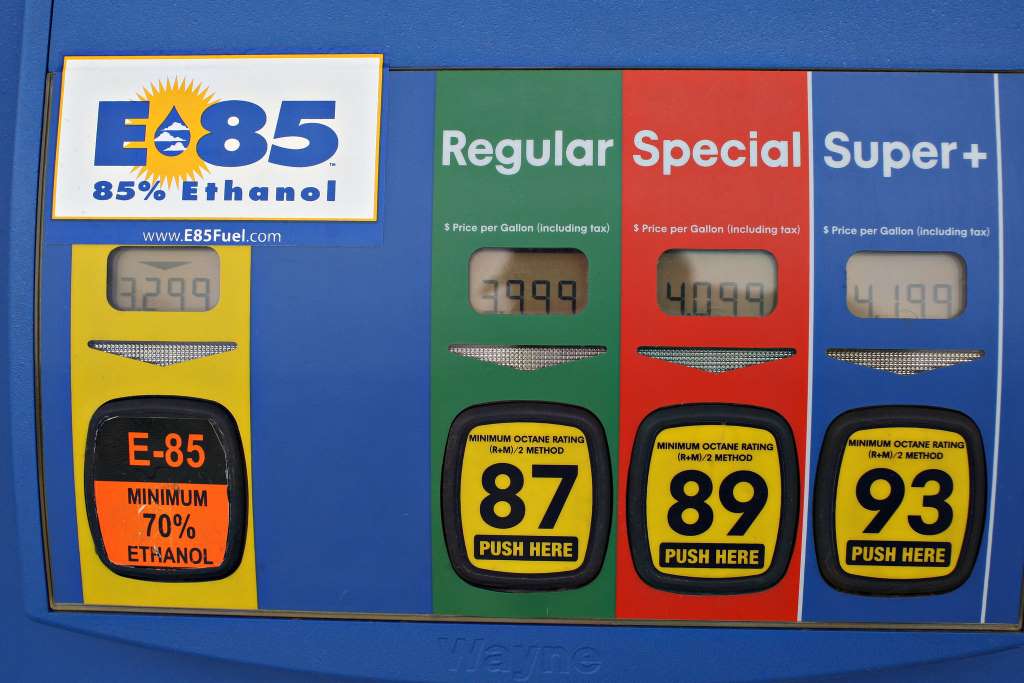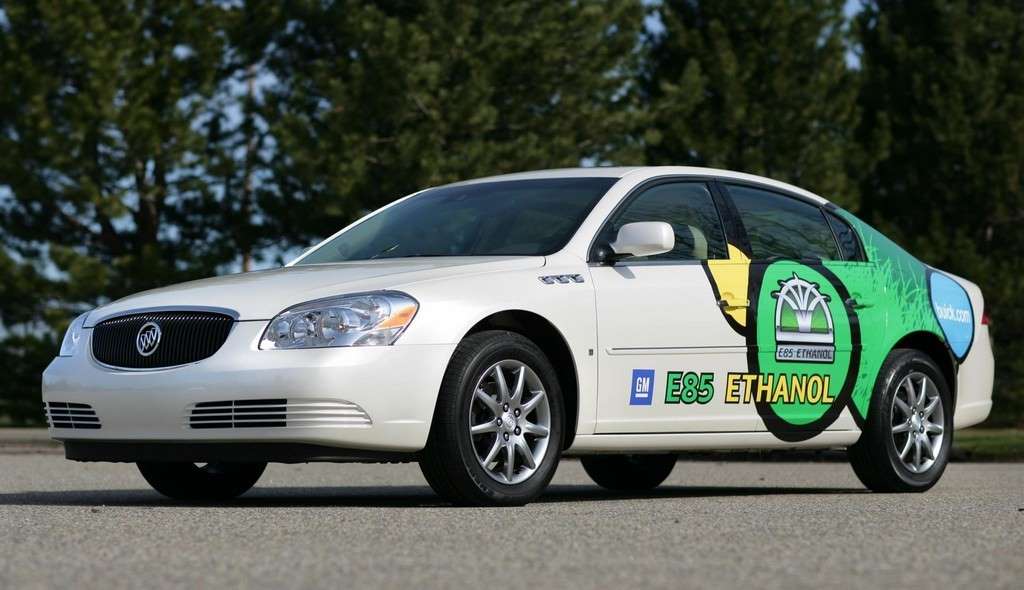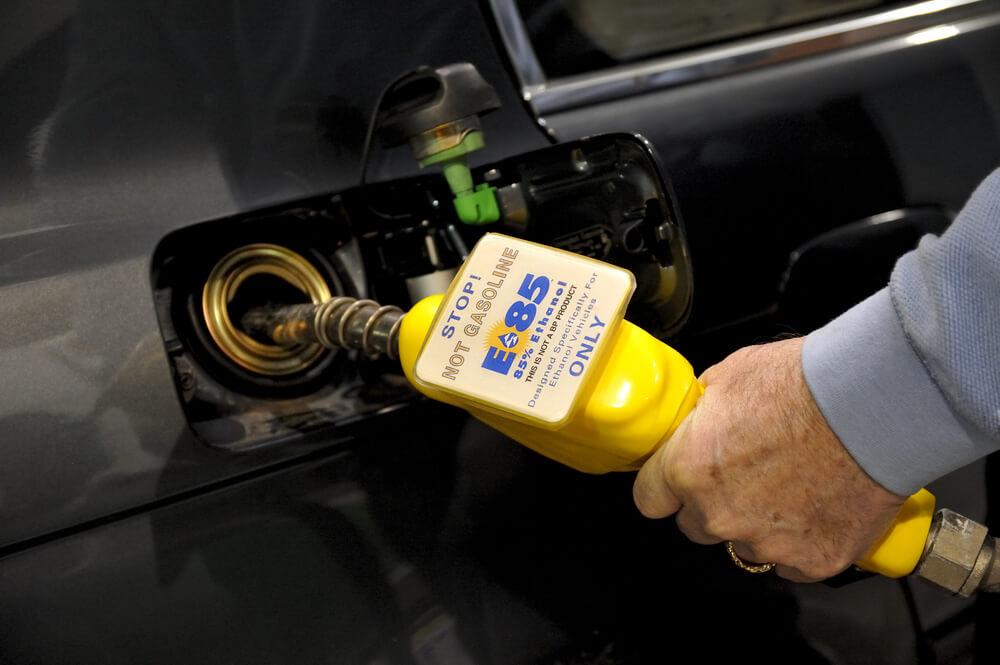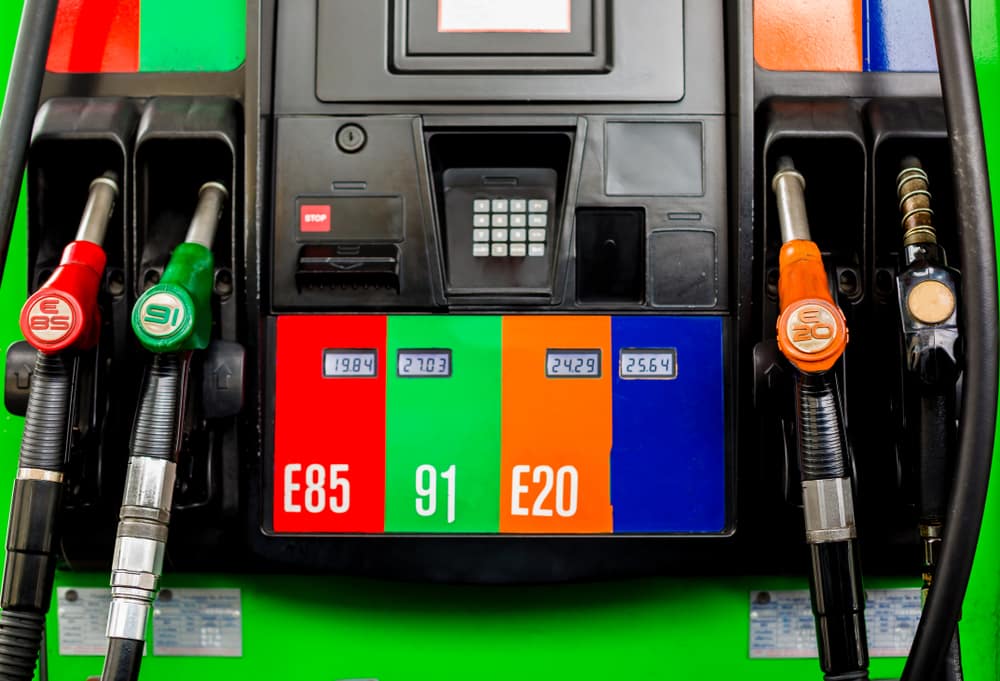Gasoline is simply a fuel, which is also essential to operate a vehicle. However, not everyone understands the types of gasoline and chooses the suitable one to fill their car. Some people even mix gasoline without even knowing it. So if you are accidentally caught up in the can-not-go-back context of mixing up E85 and others, what will you do then? Can you mix E85 with regular gas without damaging your gas tank? Let’s follow along with Car From Japan right now.
Contents
- What is E85 Gas?
- Can You Mix E85 With Regular Gas?
- Can E85 Gas Mixing Damage The Flex Fuel Vehicles?
- FAQs on E85 Gas and Mixing E85 With Regular Gas
- Can E85 boost inflexible-fuel car performance?
- How to calculate a proper E85 and regular gas mixture?
- Will E85 damage your engine in the long term?
- Does the E85 burn hotter inside your engine?
- Do you get better gas mileage with the E85?
- Does the E85 give you more power?
- Does E85 affect your car oil?
- What does the yellow E85 gas cap mean?
- Why is the E85 gas so cheap?
- Wrapped Up On Can You Mix E85 With Regular Gas
What is E85 Gas?
Even if you are a novice or experienced driver, you may already hear of the E85. It is one of the most popular options when it comes to gas filling or using an alternative gas. Flexing with the mixture of fuel and ethanol with the e-ratio ranges from 51% to 85%, this gasoline is suitable for tons of cars but only when it is compatible with the engine.
People can refine and extract ethanol from simple ingredients such as plants, especially wheat, sugar cones, and corn. When burned, this gas releases carbon dioxide into the atmosphere, but it also captures carbon dioxide during growth. This makes ethanol a carbon-neutral fuel. So people choose to use E85 because it is a renewable fuel, can reduce dependence on oil and has a lower carbon content than regular gasoline.
Although ethanol fuels reduce greenhouse gas emissions by about 50% and are cheaper than conventional gas, ethanol-blended fuels have a lower fuel economy making their use more expensive in general.

This is a measure of the fuel’s resistance to detonation when compressed. In terminology, higher octane means more downforce, which in turn means more power in an internal combustion engine.
Using the E85, you can take advantage of and suffer from these characteristics at the same time.
Advantages:
- E85 is a renewable gas made from natural ingredients and does not contain toxic substances.
- The gas helps reduce emissions and improve air quality when commuting.
- Its price can be cheaper than regular gasoline on the market.
Disadvantages:
- Not all vehicles can run on the E85. Be sure to check with your car manufacturer before using and injecting gas into the tank.
- The engine may start knocking and ping sound if you use too much E85 gasoline with a disproportionate >85%.
- E85 has less power than regular gasoline, so if you only use E85 instead of regular gasoline, or your vehicle is not a flex-fuel specialist, your vehicle’s performance may decrease and it will not work at optimal levels.
- E85 reduces storage time and can cause pre-ignition, causing the pistons to burn improperly and potentially damaging internal components.
- The conversion time when you convert to ethanol base gas, even E10, E15, or E30, there will be a transition period where you will have lower octane in your engine due to phase separation. This can cause the ethanol to dissolve deposits in the fuel system and tanks, leading to a depleted upper layer of ethanol, resulting in a lower octane rating for a while.
- The most detrimental effect of E85 fuel is on vehicles that do not flex fuel certified. Filters on non-certified vehicles will fail over time when exposed to ethanol, causing severe damage to the structural integrity of internal components.
Overall, using the E85 can damage your car’s engine if you don’t use the suitable fuel mix ratio or if the car isn’t designed to run on it.
Can You Mix E85 With Regular Gas?
You can mix E85 with regular gasoline for your flex fuel car’s fuel tank. However, you should first check with the manufacturer and research the car thoroughly before refueling to see if it is specifically designed to handle fuels with a high ethanol range.
However, before and while mixing E85 with any other gasoline, there are a few things to keep in mind. These notes are all based on the disadvantages that you may encounter when using E85 ethanol for your vehicle that we mentioned above.
- First, ensure your car runs on ethanol with a ratio that can go up to 85%.
- Moreover, be aware that using more ethanol may result in some issues. If you use too much E85 in your car’s fuel tank, your car’s engine may start to hum and ping. This is because ethanol has more energy than regular gasoline and can overload the engine if not adjusted accordingly.
- Third, try to stick to a 50/50 mix between E85 and regular gas. This will help ensure that your vehicle runs smoothly and operates without any possible problems.
Can E85 Gas Mixing Damage The Flex Fuel Vehicles?
No evidence mixing glasses can damage a vehicle running on flex fuel. Using a mixture of ethanol and gasoline is the best way to keep your car running smoothly.
However, you should check with the car manufacturer to make sure your vehicle can handle different blends of ethanol. Some cars can’t run on anything other than pure gasoline, so you must know what type of fuel your car needs.
Using the E85 in a fuel-efficient vehicle is a great way to reduce emissions and save on fuel costs. Just make sure to mix the two fuels in the right proportions and you’ll be fine!
FAQs on E85 Gas and Mixing E85 With Regular Gas
Below are some of the most frequently asked questions on the E85 gas and the mixture issue between E85 and regular gas. Let’s follow along.
Can E85 boost inflexible-fuel car performance?
There is a lot of debate about whether the E85 can boost the performance of an inflexible car. Some say it is possible, while others believe it cannot. But overall, there is no absolute answer. It depends on the make and model of the vehicle, as well as the specific engine.
In general, however, using the E85 in an inflexible vehicle may not result in significant performance gains. In fact, in some cases, it can even reduce performance because E85 has less energy content than gasoline – about 33% less.

However, there are a few things you can do to improve the performance of a non-flexing car running on the E85.
First, make sure that your car engine is madly deeply tuned for this kind of fuel. You may also need to upgrade engine components, such as the fuel system and the ignition system. And you can use an octane booster to increase the octane rating of your car fuel. This will help your vehicle run more efficiently and achieve better performance.
>> Check more: Why Does E85 Make More Power Than Gasoline?
How to calculate a proper E85 and regular gas mixture?
To calculate your mixture, you can get an ethanol meter to determine how much of your gas mixture is ethanol. Remember that E85 does not mean 85% in most cases.
As explained in our post here, E85 gas can have between 51-85% ethanol, which is within the regulatory standard.
Will E85 damage your engine in the long term?
If you don’t have a flexible fuel vehicle, E85 can seriously damage the filters and seals that keep everything nice and tight in your fuel system, causing significant damage over time. The E85 won’t damage your engine if you have a flexible fuel-certified vehicle.
To check if you have a flex fuel car, you can do the following:
- Check the yellow gas cap or the fuel filler cap.
- Inspect the fuel door
- Check your owner’s manual
- Look for badges on the bodywork
Most flex-fuel vehicles have a yellow gas cap or a lining on the fuel filler ring that you can use to identify the vehicle. Also, some cars have an indicator light on the fuel door or bodywork to let you know that you can use the E85. If you do not find any method possible, check out your car owner’s manual.
Does the E85 burn hotter inside your engine?
E85 emits about 20-30% less heat than regular gasoline inside your car engine.
Do you get better gas mileage with the E85?
Gasoline savings drop with the E85 because it has a shorter fuel tank storage time, which means some of the gas will evaporate. Also, the tank claims to use 20-30% more E85, burning up your fuel supply faster.
Does the E85 give you more power?
The E85 offers a good power boost with compatible vehicles, raising the octane rating to 100 to 105.

Does E85 affect your car oil?
E85 is not considered a hazard to your oil mixture unless it is mixed with water. Contaminated E85 can convert to formic acid, damaging the engine by reducing the oil’s ability to lubricate when needed.
As long as you inspect and change the oil in time regularly, the E85 gas will not be a problem for any of your engine parts and operating system.
What does the yellow E85 gas cap mean?
The yellow E85 gas cap indicates that your vehicle has been certified flexible fuel.
Flexible fuel vehicles are built with washers and filters that don’t break down easily from ethanol. There are lots of newer/modern car models that are certified flexible in fuel, while older models may not come with this characteristic.
Having a yellow gas cap indicates that it is safe to use E85 as fuel for your particular vehicle. However, it does not indicate that E85 is a necessary or preferred fuel for your car. That decision is up to you to match performance, mileage, and gas mix.
Why is the E85 gas so cheap?
E85 is much easier to obtain and produce than regular gas.
Fossil fuels are a scarce resource than corn, wheat, and cane sugar from which ethanol is refined, which shows in prices. Many political and economic stability factors can affect the price of conventional gasoline.
E85 is not cheap because it is a lower-quality gas; instead, it’s just something that’s not for all vehicles.
Wrapped Up On Can You Mix E85 With Regular Gas
In conclusion, you can mix E85 with regular gas without problems. However, you should check with the car manufacturer to make sure your vehicle can handle different blends of ethanol. And finally, keep in mind that using the E85 in an inflexible vehicle with a wide range of fuels may not result in any significant performance gains.
Above is all the information you can take for references on the wondering “Can you mix E85 with regular gas“. We hope you have some better insight after scrolling and can apply flexibility to this base info to your fueling due next time.
For more helpful car maintenance tips, follow Car From Japan today.



